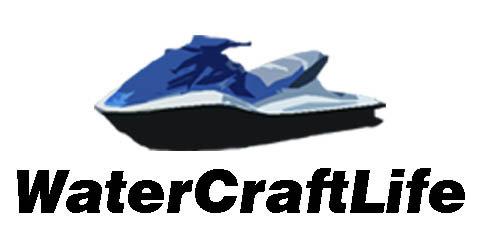Winterizing a boat after the season is a great way to protect your boat from the harsh elements associated with boating. The winterization process is also an ideal time to thoroughly check all the aspects of the boat, allowing for repairs or servicing to be done during the winter months when it will cost you less.
All boats need some form of winterization. Whether hauling out, trailering a boat, or leaving the boat in the slip for winter, all boats will require some level of winterization to ensure that early services and repairs will have the boat ready for use when the weather allows for boating again.
Each boat will require some specific winterization procedures to be done before putting it on the hard, trailering it to storage, or simply just leaving it tied up for the winter. Additional precautions are needed in regions affected by severe storms like hurricanes, typhoons, severe ice, and snow. Let’s look at a general checklist together.
Why you need to Winterize your Boat
Boats need to be winterized for several reasons including severe weather, ice, wind, lack of use, and much more. There is nothing harder on a boat than not using it. Letting something sit without taking care of it for 6 months at a time is a recipe for disaster if you fail to ensure your systems are prepared prior to your next use.
Winterization Procedures for Boats Left in or Out of the Water
A marine environment is the most demanding, especially on the mechanical and electrical systems on a boat. The exterior of a boat is designed to be resistant to exposure to wind, water, and the corrosive properties of freshwater and saltwater.
The Engine And Fuel System Winterization
Step One of the winterization process is to prepare the engine for many more hours of trouble-free service during the next season. Fill the fuel tanks to maximum capacity to prevent damp sea air from polluting the fuel with water. If the fuel tanks are filled to maximum capacity, there is little or no space for damp air.
For diesel fuel, it is recommended to add some bacterial growth inhibitor to the diesel, which will prevent any growth in the tanks, fuel lines, and engine during storage. Let the engine run until the fuel containing the inhibitor has circulated throughout the engine and fuel system.
Shut the engine down and then drain the engine oil while it is nice and warm. Changing the engine oil will require you to pump all the engine oil out via the dipstick tube or other assigned drainage point. Warm oil is easier to extract from the engine sump than cold oil.
Replace the oil filter with a new filter at this point. Ensure that the old oil and oil filter is properly disposed of. Next, you have to replace the fuel filters on the fuel supply system. Close off the fuel flow from the tank and clean out the main filter between the fuel tanks and the engine. Also, replace the engine fuel filter at least every second year.
Bleed out any air from the fuel system and have the engine ready to start up if cranked. The final aspect of the engine is cleaning out the cooling system for the winter. As raw water is used to keep the heat exchanger cool, cleaning out this raw water loop is important.
Close the raw water intake seacock and clean out the raw water strainer at the service and inspection lid. Fill a gallon jug with a 50/50 mixture of fresh water and propylene glycol (marine anti-freeze) and fill the sea strainer with this mixture. Start the engine and keep filling the strainer until the mixture has been drawn into the cooling system.
The propylene glycol’s lubricating and anti-corrosive properties will help clean and protect the copper piping, rubber hoses, and heat exchange of the cooling system. Ensure that you use the marine-friendly anti-freeze and not the environmentally harmful automotive ethylene glycol-based anti-freeze.
Place a sticker with bright red lettering at the engine start control to remind you to open the raw water seacock before starting the engine again. Failure to open the raw water seacock with the engine running will cause severe damage to the engine.
Preparing The Head For Winter
Marine toilets mostly use fresh or salt water to flush, and leaving the head full of seawater for several months will create an ungodly smell in the boat. In cold climates, the water in the toilet may also freeze during winter, causing the pipes to crack and resulting in an unpleasant and expensive repair in the spring.
After scrubbing and cleaning the toilet bowl, flush it out with fresh water and pump out the water. Close the raw water intake seacock for the head. Repeat the freshwater flush several times and then add some anti-freeze to the toilet, preventing the water from freezing. If the boat is kept on the hard, fill the entire system with anti-freeze in a very cold climate. Leave a note on the seat of the head to remind you to open the raw water seacock again before using the toiler at the start of the new season.
Winterizing The Electrical Systems On A Boat
Start by completely disconnecting all the batteries on the boat. Take pictures or label the connector cables to help you to remember how to reconnect them. Clean all the terminals and service the batteries by filling them up and fully charging them. Use a shore power charger for the charging.
Install a dehumidifier and a low-energy greenhouse heater in the boat to keep control of the dampness and moisture that will cause condensation and mildew to form. The water collected by the dehumidifier can be left to discharge into the sink to drain out of the boat via the seacock. This is the only seacock that needs to be kept open during the winter.
Remove all the electrical equipment that can be unplugged and taken home with you, reducing the risk of theft during long storage. It is a great opportunity to spay some electrical spray into the connector sockets. Remove the transducer depth gauge and replace it with the dead-man plug.
Empty Out The Boat For The Winter
Remove all fabric-based materials as far as possible. Remove the pillows and bedding. All the towels, clothing, and food need to be taken off the boat. Clean the fridge and freezer out with some vinegar to kill off any bacteria and leave them open during the winter so that they can remain fresh.
Clean out the lockers and wipe them down with a vinegar-soaked cloth to eliminate any mold spores. Lift the mattresses so that they can breathe, remove them from the boat if possible. Remove all the safety gear from the boat to be serviced and replaced before the start of the next season.
Life jackets need to be serviced annually, and the emergency life raft must be serviced every 2 to 3 years. The flare gun and flares need to be checked whether they have not expired yet and replaced at the start of the new boating season.
Preparing The Outside Of The Boat For Winter
Ensure that all the lines have chafe protection where they make contact with the side of the boat. Do not just tie down to a single cleat, but build in some redundancy if one tie down fails. Make an arrangement with the marina management to check on your boat regularly and that it is still securely tied down.
Remove all the sails from the boat if equipped and fold them up for winter service and storage. The effort of having the sails cleaned, dried, and folded up for winter storage will extend their useful life by many years. Leaving sails and ropes up will cause additional windage during severe storms.
If you leave sails up, make sure that they are properly rolled up and will not unfurl in a storm. If you have an in-mast mainsail, remove and fold it up for storage. Leaving it up will cause the edge that sticks out to discolor and weather and look different from the rest of the mainsail when unfurled.
Leave yourself a checklist of things to remember to do when you come back to the boat. Make arrangements with the harbormaster or marina management to keep a spare set of keys to your boat. Advise your boat insurance company that your boat is in storage and fully winterized.
Conclusion
Properly preparing your boat for winter storage, whether in a marina, on a hard stand, or a trailer is important to prevent the systems and materials on the boat from deteriorating. Prepare a checklist for winterization and the start of a new season on the water.
Develop your winterization procedure so that you can extend the life of your boat and protect its value for many seasons. A well-cared-for boat will withstand the scrutiny of assessors when you need to sell your boat.
Most importantly, the safety of your boat and crew requires that the boat is meticulously maintained and that all failsafe systems are kept fully operational. The effort invested in winterization is rewarded in spring when you can get the new season off to a great start.


